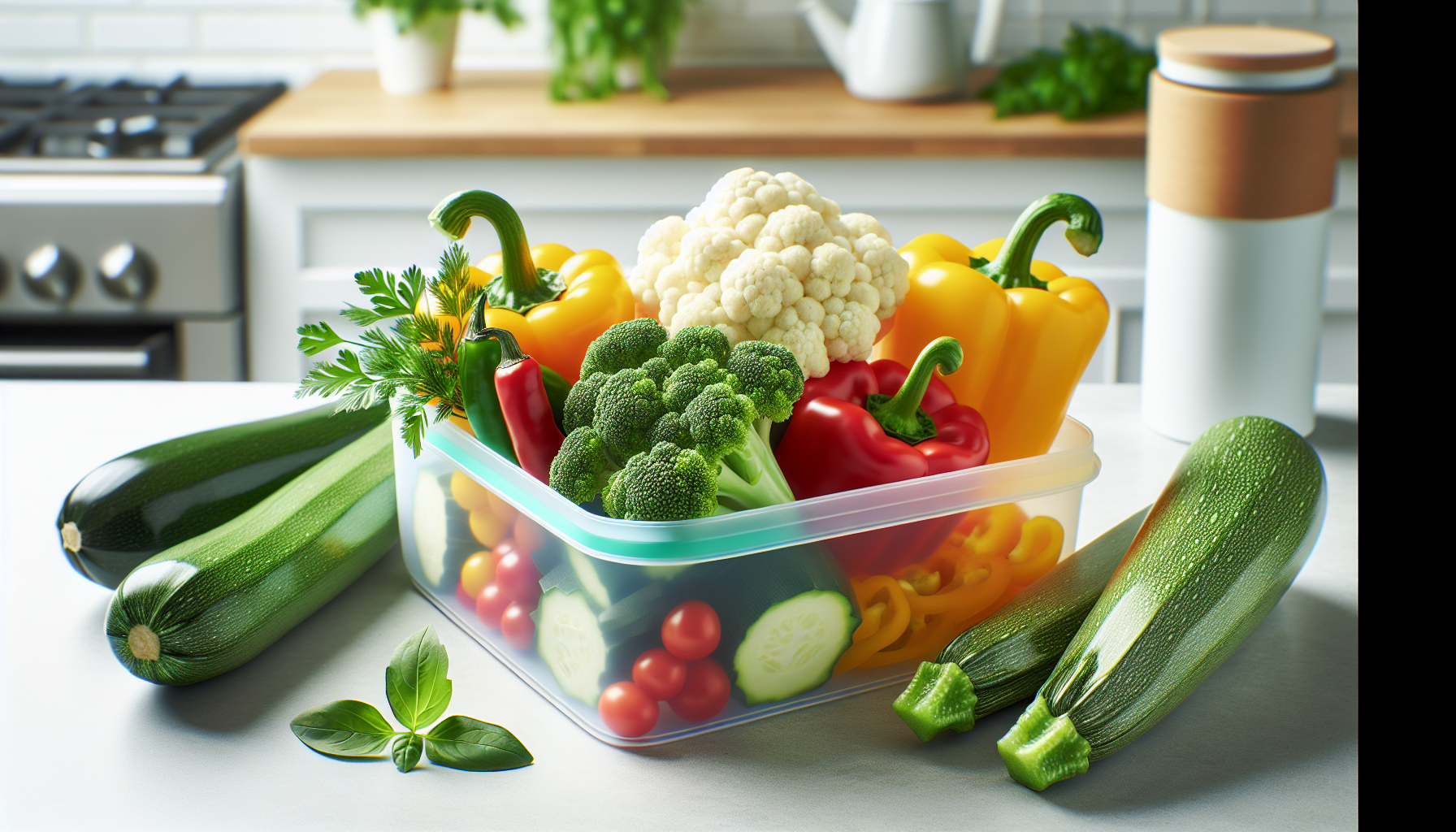Have you ever felt overwhelmed at the thought of meal prep, especially when you need to consider specific dietary restrictions?
Understanding Oxalates: The Basics
To kick things off, let’s talk about oxalates, which are small molecules found in various foods and beverages. For some people, especially those prone to kidney stones, limiting oxalate intake can be crucial. You might be wondering which foods belong to this category and why they require special attention.
What Are Oxalates?
Oxalates are naturally occurring substances in many plants. They bind to minerals like calcium and can form crystals, leading to potential health issues, particularly for those who are sensitive. Foods high in oxalate include spinach, beets, and certain nuts. Understanding oxalates empowers you to make smarter choices for your health.
The Impact of Oxalates on Health
For some, a diet high in oxalates can lead to complications, including kidney stones and other medical concerns. By being mindful of your oxalate intake, you can manage your health more effectively while still enjoying delicious meals.
Batch Cooking: The Concept
Batch cooking is one of those life hacks that’s worth its weight in gold. It saves you time, reduces food waste, and allows you to maintain control over your dietary choices. For those needing to focus on an oxalate-friendly approach, batch cooking can seem daunting, but it’s entirely manageable with the right techniques.
The Benefits of Batch Cooking
When it comes to meal planning, the advantages of batch cooking are plentiful. You can prepare larger quantities of meals, divide them into portions, and eat them throughout the week. This approach not only saves you time during busy weekdays but also keeps your meals consistent with your dietary needs.
Planning Your Oxalate-Friendly Meals
Before you dive right into cooking, a solid plan can make all the difference. Let’s break it down.
Create a Menu
Start by jotting down a weekly menu that highlights meals you want to include. Check which ingredients are low in oxalates, and make those the stars of your meals. This way, you’re locked into a plan.
| Day | Meal | Key Ingredients |
|---|---|---|
| Monday | Quinoa Salad | Quinoa, cucumbers, olive oil |
| Tuesday | Chicken Stir-fry | Chicken breast, bell peppers, zucchini |
| Wednesday | Beef and Vegetable Soup | Lean beef, carrots, celery, potatoes |
| Thursday | Rice with Roasted Vegetables | Brown rice, cauliflower, garlic |
| Friday | Turkey Meatballs and Spaghetti | Ground turkey, spaghetti squash |
Choose Oxalate-Friendly Ingredients
When selecting your ingredients, knowledge is power. Focus on items like lean meats, grains like rice and quinoa, and low-oxalate vegetables such as carrots and cauliflower. Feel free to spice things up with herbs and spices that don’t contain oxalates, like basil or oregano.
Batch Cooking Techniques
Now that you’ve got the planning in place, let’s get to the heart of the matter: the cooking methods.
Prepping for the Week
Prepping your ingredients can make a significant difference. Spend some time washing, chopping, and organizing your components before you start cooking. This multitasking can save you significant time when it’s cooking day.
- Wash your vegetables: Give them a good rinse to remove any dirt.
- Chop and store: Cut your veggies and store them in airtight containers. This keeps them fresh and ready to go.
- Measure grains and proteins: Portion them out according to your menu.
Cooking Techniques to Use
Each cooking method can bring out different flavors and keep your meals interesting.
1. Roasting
Roasting brings out the natural sweetness of vegetables and proteins. Preheat your oven and toss your chosen vegetables, such as zucchini, broccoli, and carrots, with a little olive oil and seasoning. Spread them out on a baking sheet for about 25-30 minutes.
2. Sautéing
Sautéing is a quick and straightforward option for cooking up your proteins and vegetables. Heat a tablespoon of oil in a pan and add your veggies or protein. Stir until everything is cooked through.
3. Slow Cooking
This method lends itself well to soups and stews packed with flavors. Toss your ingredients in a slow cooker and let it work its magic over several hours. This way, you prepare one large batch, which becomes your meals for days to come.
4. Freezing
Don’t forget about the power of freezing meals. Store your cooked items in portion-sized airtight containers. When you’re ready to eat, simply defrost and reheat; it’s that easy!
| Technique | Ideal For |
|---|---|
| Roasting | Vegetables, chicken, fish |
| Sautéing | Quick protein and veggie dishes |
| Slow Cooking | Soups, stews, and sauces |
| Freezing | Leftovers and single servings |
Storing Your Meals
Once your meals are cooked, the next step is storing them properly. This ensures they stay fresh for the duration of the week.
Airtight Containers
Invest in a set of good-quality airtight containers. They’re ideal for keeping your food fresh and preventing contamination. Choose the size based on portion sizes.
Labeling
Don’t forget to label your containers. Write down the name and date on a piece of tape or use a marker directly on the lid. You’ll thank yourself later when you know what meals to reach for.
Tips for Eating Out on an Oxalate-Friendly Plan
Let’s face it, cooking every meal can be a challenge, and sometimes you want to enjoy a night out. Here are tips for navigating restaurant meals without completely derailing your diet.
Research Before You Go
Check the restaurant’s menu online before heading out. Look for options that align with your oxalate-friendly choices. You can know whether to opt for a grilled chicken dish or a stir-fried option.
Don’t Be Afraid to Customize
Many restaurants are happy to accommodate dietary restrictions. You can request modifications, like replacing high-oxalate sides with salads or steamed vegetables.
Portion Control
Mind your portions. You can always ask for smaller sizes or get a meal to share. Eating smaller amounts can help you enjoy dining out without overdoing it.
Maintaining Variety in Your Meals
Eating healthy doesn’t mean you must eat the same things over and over. Spice up your oxalate-friendly meals to keep your taste buds happy.
Experiment with Flavors
Try out new herbs, spices, and sauces. They’re your best friends in the kitchen, transforming simple meals into flavor-packed creations.
New Recipes
Seek out new recipes that align with your dietary needs. Websites, cookbooks, and cooking shows provide endless options. Take time each week to try something new.
Meal Swaps
Consider swapping meals with friends or family if they’re willing. It adds variety without additional effort on your part. You might find some delightful surprises!
Conclusion: Your Path to Stress-Free Batch Cooking
With the right strategies, batch cooking for an oxalate-friendly diet can be both manageable and enjoyable. You’ve learned how to plan, cook, store, and even navigate dining out—all while keeping your health in check. So, the next time you feel overwhelmed by the idea of meal prep, remember that you have the tools and knowledge to tackle it, one delicious dish at a time.
You can absolutely make health-conscious choices while still enjoying tasty meals. After all, eating well should be a pleasure, not a chore. Here’s to successful batch cooking!





